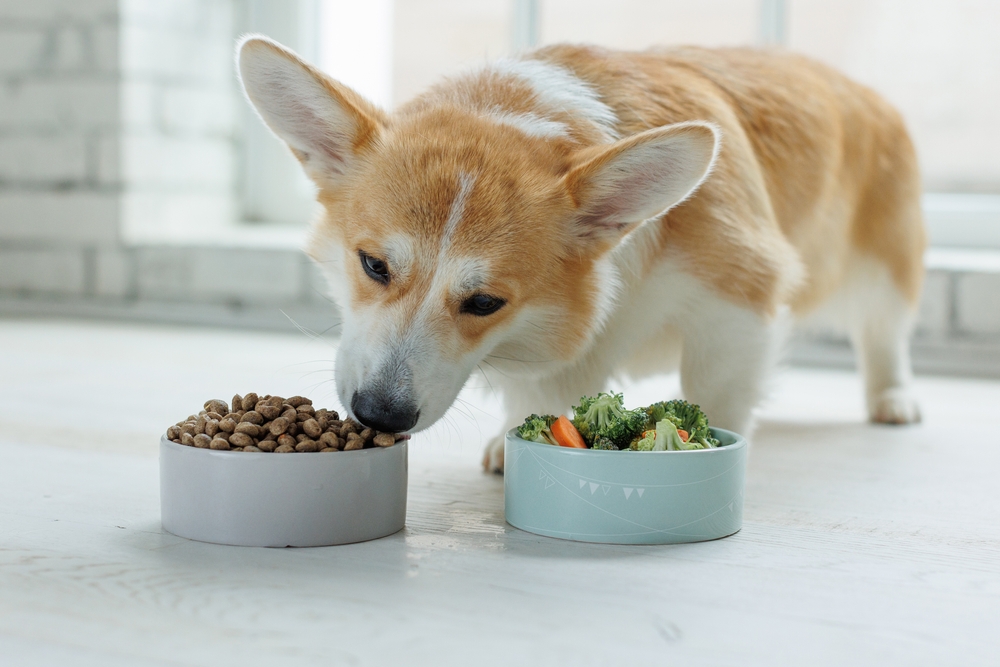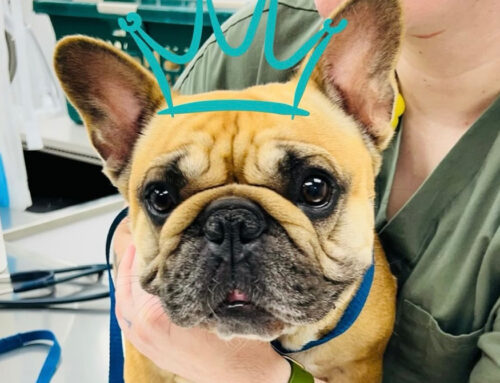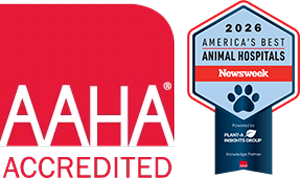Understanding the Need for Dietary Changes in Pets
As pet owners, we all want to give our pets the best possible care, and that starts with a healthy, balanced diet. But how do you know when your pet’s current food isn’t cutting it?
Some key signs may suggest it’s time to consider a diet change. Persistent digestive problems, such as diarrhea or constipation, skin issues like excessive itchiness or a dull coat, sudden weight changes, or shifts in appetite can all indicate your pet isn’t getting the nutrition they need.
These symptoms don’t just affect your pet’s physical health—they can also impact their behavior, leading to lethargy, irritability, or reduced activity levels. Nutritional needs evolve with age, too. Growing puppies and kittens have very different dietary requirements compared to senior pets, and certain breeds may have unique nutritional needs or restrictions that require special attention.
The Role of Professional Guidance in Dietary Transition
At Montgomery Animal Hospital in Cincinnati, Ohio, our veterinary professionals can guide you through adjusting your pet’s diet. We assess the immediate signs and symptoms your pet may be experiencing and consider underlying medical conditions that could necessitate dietary adjustments.
For example, pets with chronic conditions like diabetes or kidney disease require specific nutritional management to prevent further health complications. Our team can help tailor a diet plan that suits your pet’s individual health needs and lifestyle.
Before making any changes to your pet’s diet, we recommend scheduling a consultation with one of our veterinarians to discuss the most appropriate dietary options and strategies.
Key Steps to Safely Transitioning Your Pet’s Diet
Starting with the Right Diet Choice
Choosing the right diet for your pet involves considering factors like age, health status, breed, and activity level. A high-energy dog like a Border Collie will have different dietary requirements compared to a less active breed such as a Bulldog, or Great Dane. Pets with specific health issues, like urinary tract problems, may benefit from diets formulated to prevent crystal formation. Not every diet is right for every pet, and some can actually be dangerous if given to pets with certain medical conditions. There are many diets to choose from; we recommend choosing a diet that meets AAFCO standards. Ask us what we’d choose for your pet!
Integration Method: Gradual Introduction to the New Diet
To minimize gastrointestinal upset, gradually transition your pet to their new diet. Mix the new food with the old food in slowly increasing proportions over about 7 to 10 days. This approach helps your pet adjust to the new taste and texture and allows their digestive system to adapt to the new ingredients.
Maintain consistency in feeding times and avoid introducing other new foods or treats. Detailed guidance on managing this process can be found in the Purina Guide on Changing Dog Food.
Monitoring Your Pet’s Health During the Transition
During the transition period, observe your pet closely. Look for signs of a positive reaction, such as improved energy levels, healthier stools, and a shinier coat. Conversely, signs of a negative reaction may include vomiting, excessive gas, rapid weight change, or a change in stool consistency. Behavioral changes, such as increased lethargy or anxiety, can also indicate that the new diet isn’t suitable.
If any of these occur, contact our clinic immediately. Early intervention can prevent more severe reactions and allow for a quick adjustment to a more suitable diet plan.
FAQs About Diet Transition
How Long Should the Dietary Transition Take?
The duration of the dietary transition can vary depending on the pet’s health status and the type of diet being introduced. Typically, a transition period of one to two weeks is recommended. However, for pets with sensitive digestive systems or those transitioning to a significantly different diet, a longer period may be necessary.
In some cases, particularly with therapeutic diets, a gradual transition may extend over several weeks to ensure minimal disruption to the pet’s health. It’s important to select a diet that supports your pet’s overall health and wellness. The Tips and Timelines resource from AAHA provides valuable guidance on what to consider.
What Are the Signs of Dietary Intolerance?
Symptoms of dietary intolerance can include digestive upset such as diarrhea or vomiting, lethargy, and sometimes changes in skin and coat health. If left unaddressed, these symptoms can lead to more severe health issues like dehydration or malnutrition.
If you suspect your pet is not tolerating the new diet well, consult with a veterinarian promptly.
Why Trust an AAHA-Accredited Hospital with Your Pet’s Nutrition?
Choosing an AAHA-accredited hospital like Montgomery Animal Hospital ensures that your pet’s nutritional management is guided by the latest research and highest standards in veterinary care.
The American Animal Hospital Association (AAHA) accreditation is a mark of excellence, indicating that we adhere to over 900 standards of care, including those related to nutrition. What is AAHA? Learn more about how this benefits your pet.

Ready to Start Your Pet on a New Diet? We’re Here to Help
To ensure a smooth and health-conscious transition to a new diet for your pet, schedule an appointment with us at your convenience. Our consultations include a thorough health assessment to tailor dietary advice to your pet’s unique needs, considering both short and long-term health objectives.








Leave A Comment